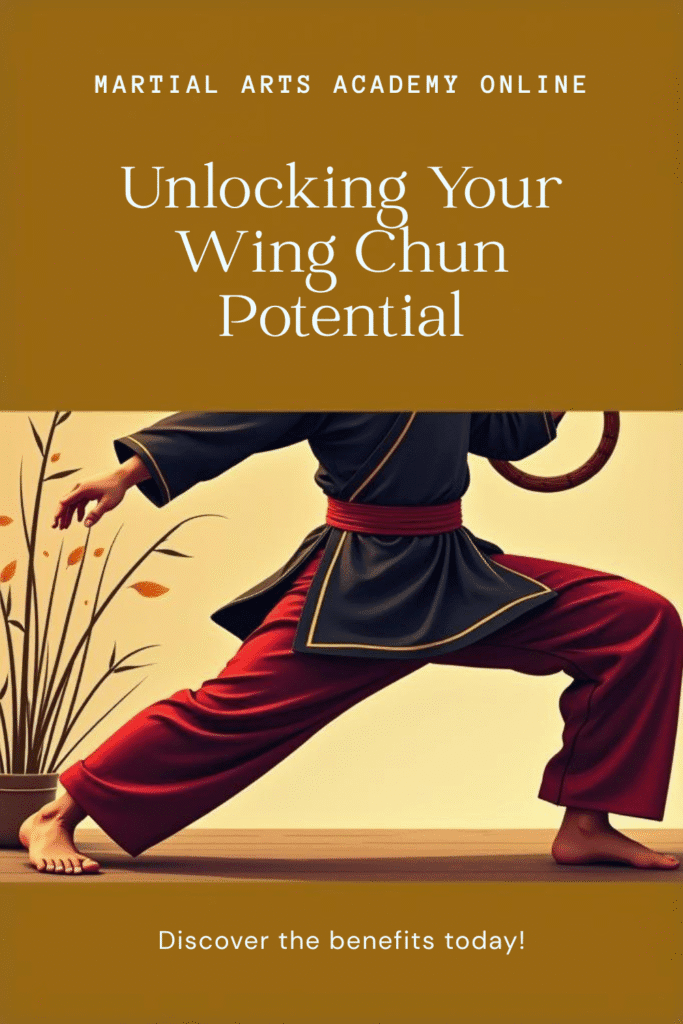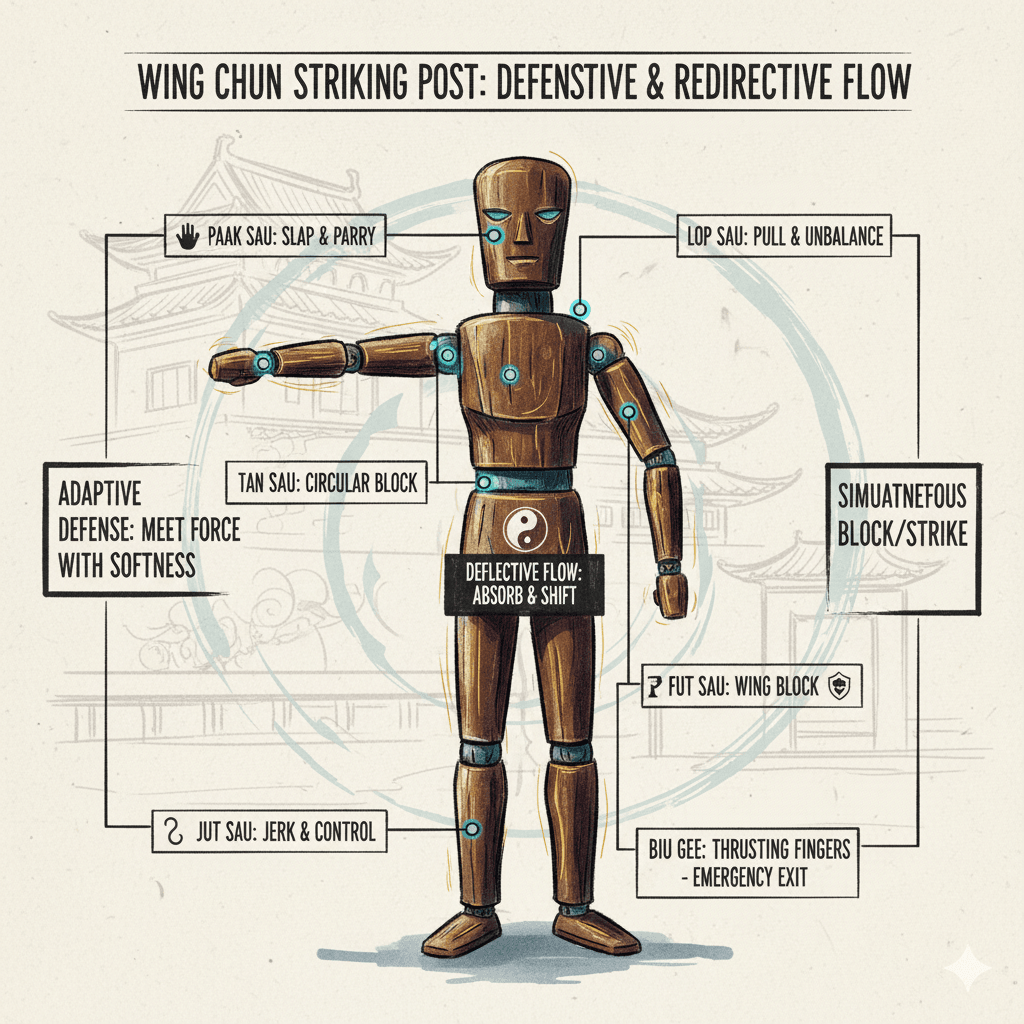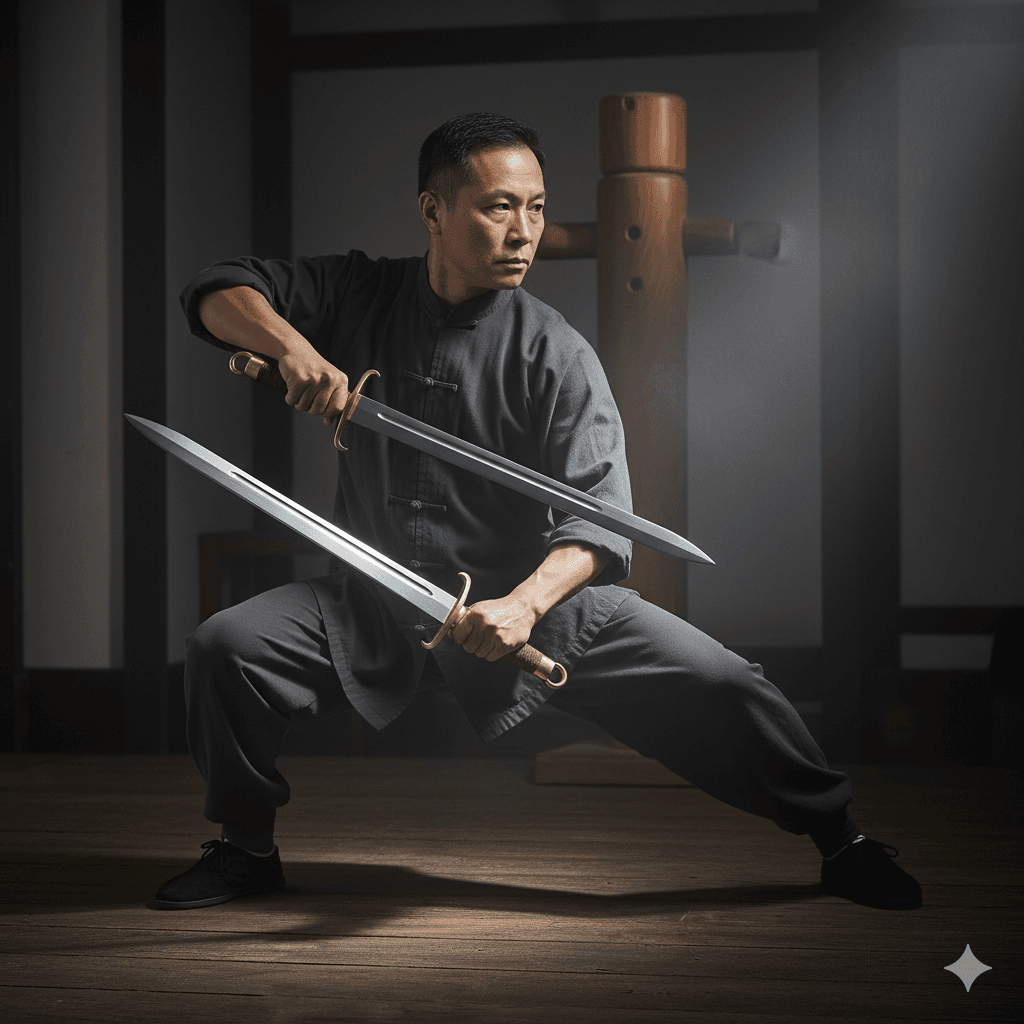The rattan ring is an essential training tool in Wing Chun, designed to enhance a practitioner’s structural integrity and form.
Proper body alignment and stability are crucial for executing Wing Chun techniques effectively.
The use of the rattan ring encourages practitioners to maintain an optimal posture, thereby reinforcing the foundational principles of the martial art.
When training with the rattan ring, martial artists can develop a heightened awareness of their body mechanics, leading to improved execution of techniques.
One of the primary benefits of incorporating the rattan ring into Wing Chun practice is the promotion of correct body alignment.
As practitioners engage with the ring, they are encouraged to focus on their stance, ensuring that their weight is distributed evenly across their feet.
This balance is vital for maintaining a strong foundation during combat.
Additionally, the rattan ring can help individuals identify misalignments in their posture, leading to corrective measures that can significantly enhance performance.
Specific exercises, such as the “circle drill,” implemented with the rattan ring, allow practitioners to engage in dynamic movements while staying anchored in their structure.
This exercise emphasizes the importance of stability while generating movement, teaching practitioners to maintain focus on both their footwork and upper body alignment.
Furthermore, practicing techniques like the “chain punch” using a rattan ring not only promotes speed and precision but also reinforces the necessity of structure throughout the movement.
As Wing Chun practitioners consistently integrate the rattan ring into their training routine, they can experience marked improvements in their overall performance.
Through developing better form and structural integrity, individuals can improve their efficacy in real-world applications of Wing Chun techniques, enhancing both their confidence and skill set.
Ultimately, the rattan ring serves as a powerful tool for growth and mastery within the art of Wing Chun.

Increasing Sensitivity and Reaction Time
Training with a rattan ring offers Wing Chun practitioners a unique opportunity to enhance their sensitivity and reaction time, qualities that are crucial in the art of close-quarters combat.
The rattan ring facilitates an environment where participants can engage in controlled yet dynamic exchanges, promoting an acute awareness of their partner’s movements and intentions.
As practitioners spar with the rattan ring, they are required to maintain close proximity,
thereby sharpening their ability to feel subtle changes in pressure, position, and timing, which is often referred to as tactile sensitivity.
This heightened sensitivity is particularly beneficial during partner drills, where both individuals learn to react to each other’s actions in real-time.
The rattan ring propels practitioners into a rapid-response mode, transforming their reflexes and enabling them to execute techniques with precision and speed.
As they develop these skills, practitioners become more adept at recognizing patterns in their opponents’ movements, allowing for anticipatory actions rather than reactive ones.
This proactive approach significantly enhances one’s ability to defend against strikes or to counterattack effectively.
Furthermore, the exercises involving the rattan ring also emphasize the importance of timing and distance control.
Practitioners must make split-second decisions based on their sensitivity to their partner’s techniques, thus improving their overall reaction time.
The integration of the rattan ring into training not only fortifies defensive capabilities but also promotes offensive strategies that capitalize on an opponent’s momentary vulnerabilities.
Over time, as students develop their proficiency in these areas, they will find a marked improvement in their overall combat effectiveness.
Building Forearm Strength and Endurance
The utilization of a rattan ring in Wing Chun training offers a multitude of benefits, particularly in the development of forearm strength and endurance.
The design of the rattan ring requires practitioners to engage their forearm muscles consistently, which is essential for performing various Wing Chun techniques.
This continuous engagement leads to noticeable improvements in muscle strength and overall endurance, crucial attributes for any martial artist.
To effectively build forearm strength, specific training methods can be employed.
One effective drill is the “Rattan Ring Punch,” where practitioners repeatedly execute punches through the ring.
This drill not only enhances striking power but also reinforces the muscles in the forearms,
enabling them to withstand prolonged periods of exertion during sparring.
As the body adapts to this training, individuals will notice a marked increase in their ability to deliver powerful punches while maintaining form and control.
In addition, incorporating forearm-focused exercises such as “Rattan Ring Blocks” can further develop strength.
This exercise involves using the ring to practice various blocking techniques, requiring significant muscular engagement.
As practitioners work to maintain the ring’s position while executing blocks, they inadvertently enhance their grip strength and endurance.
The increased forearm strength directly contributes to the resilience of the arm during sustained fighting scenarios, where fatigue can otherwise hinder performance.
The advantages of improved forearm strength extend beyond just physical power.
Enhanced strength plays a vital role in reducing the risk of injury during training, as resilient muscles provide better support to joints and tendons.
Consequently, the disciplined use of a rattan ring within a training regimen can lead to the refinement of skills while fostering overall physical robustness, essential for any Wing Chun practitioner seeking to maximize their potential.
Choosing the Right Rattan Ring and Maintenance Tips
Selecting the ideal rattan ring for Wing Chun training involves careful consideration of several factors, including material quality, size, and the specific type of rattan used.
The material plays a crucial role in the performance and durability of the ring.
High-quality rattan, which is known for its strength and flexibility, is essential for effective training.
Look for a rattan ring that is not only lightweight but also boasts a good balance of resilience to withstand repetitive impacts during practice.
In terms of size, it is vital to choose a rattan ring that fits comfortably in your hand.
The diameter should allow for a secure grip without straining the fingers, as discomfort can hinder your training sessions. Usually, a standard size ranges from 28 to 30 centimeters in diameter, but this can be adjusted based on individual preferences and hand size.
Practitioners should also be aware that different shapes, such as circular or oval, might provide varying levels of control and mobility during exercises.
Rattan comes in various types, with some being more suitable for training than others.
For example, Malaysian rattan tends to be denser and offers better shock absorption, making it a preferred choice for many martial artists.
On the other hand, Indonesian rattan is lighter and may be more appropriate for beginners focusing on agility and speed.
Understanding these differences can help you choose a rattan ring that aligns with your training objectives.
Maintenance is equally important for prolonging the life of your rattan ring.
Regularly inspect the ring for any signs of wear and tear, such as cracks or splits.
It is advisable to clean the surface with a damp cloth to remove sweat and dirt after each training session.
Additionally, storing the ring in a cool, dry place away from direct sunlight will help maintain its integrity.
By following these tips, practitioners can ensure that their rattan rings remain durable and supportive throughout their training journey.



